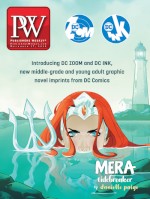Kathy Lester, media specialist and technology coach at East Middle School in Plymouth-Canton, Mich., has wholly embraced the maker movement. She launched an after-school maker club four years ago, and it received so much interest that she had to add an at-lunch maker club, too. With those two groups combined, Lester now leads more than 100 students in such maker activities as programming, robotics, crafts, and graphic design. She has recruited another teacher to cosponsor the after-school club, and also has high school students come in and help teach kids how to do some of the activities.
But Lester has also seen the shift in the maker movement that Sherry Gick, director of innovative learning at Five-Star Technology Solutions in Frankfort, Ind., and Heather Lister, senior maker fellow at the Foundry Makerspace in Harrisburg, Pa., have described. “Making is trying to move from being an add-on to being integrated with curriculum,” Lester says, and she has followed that path.
In addition to her clubs, Lester has been doing a collaborative project with eighth-grade science students for the past few years, partnering with their teacher. “We integrate it with the Next Generation Science Standards and try to get the kids more hands-on experience with innovation and the concept of problem solving by trial-and-error,” she explains. The project involves setting up eight maker stations in the library so that three or four students will work together at one time at each station. Following an assigned rotation, it takes eight days for the students to finish the project, spending one class session at each station. During that class time, students follow instructions from a provided packet that lists specific requirements at each station. “There are probing questions and things they need to do at each stop, such as draw a diagram, or measure something,” Lester says.
Among the popular stations are chip packaging, where students must use materials to pack a potato chip so that it arrives unbroken when sent to another middle school in the district, and another activity called Angry Birds on a Wire. For that one, kids must build a bridge across a series of tables using only paper, string, and tape. The bridge must support at least three Angry Birds figures inspired by the popular video game.
This project helped Lester’s library win the 2017–2018 Model 21st Century School Library award for excellence from the Library of Michigan, which is part of the Michigan Department of Education. She even used it as a springboard to advocate for more funding. In spring 2017, Lester, who is also advocacy chair for the Michigan Association for Media in Education, invited legislators—Michigan’s U.S. senators Debbie Stabenow and Gary Peters—to visit her school and observe the Science Innovation Maker Station project (its more official name) as she asked for funding increases.



 Volume 265
Issue 51
12/17/2018
Volume 265
Issue 51
12/17/2018





